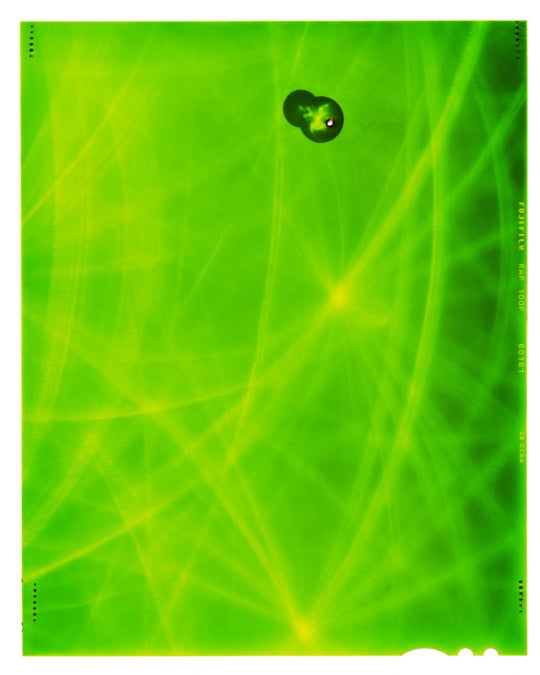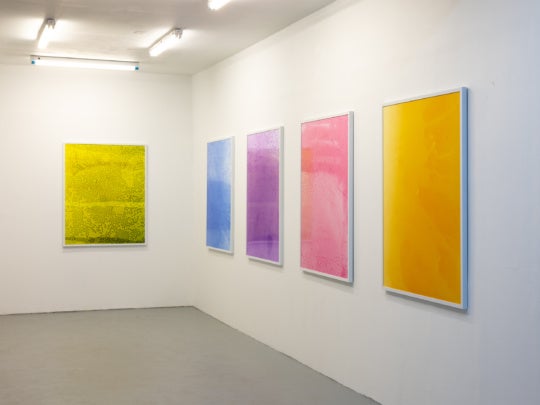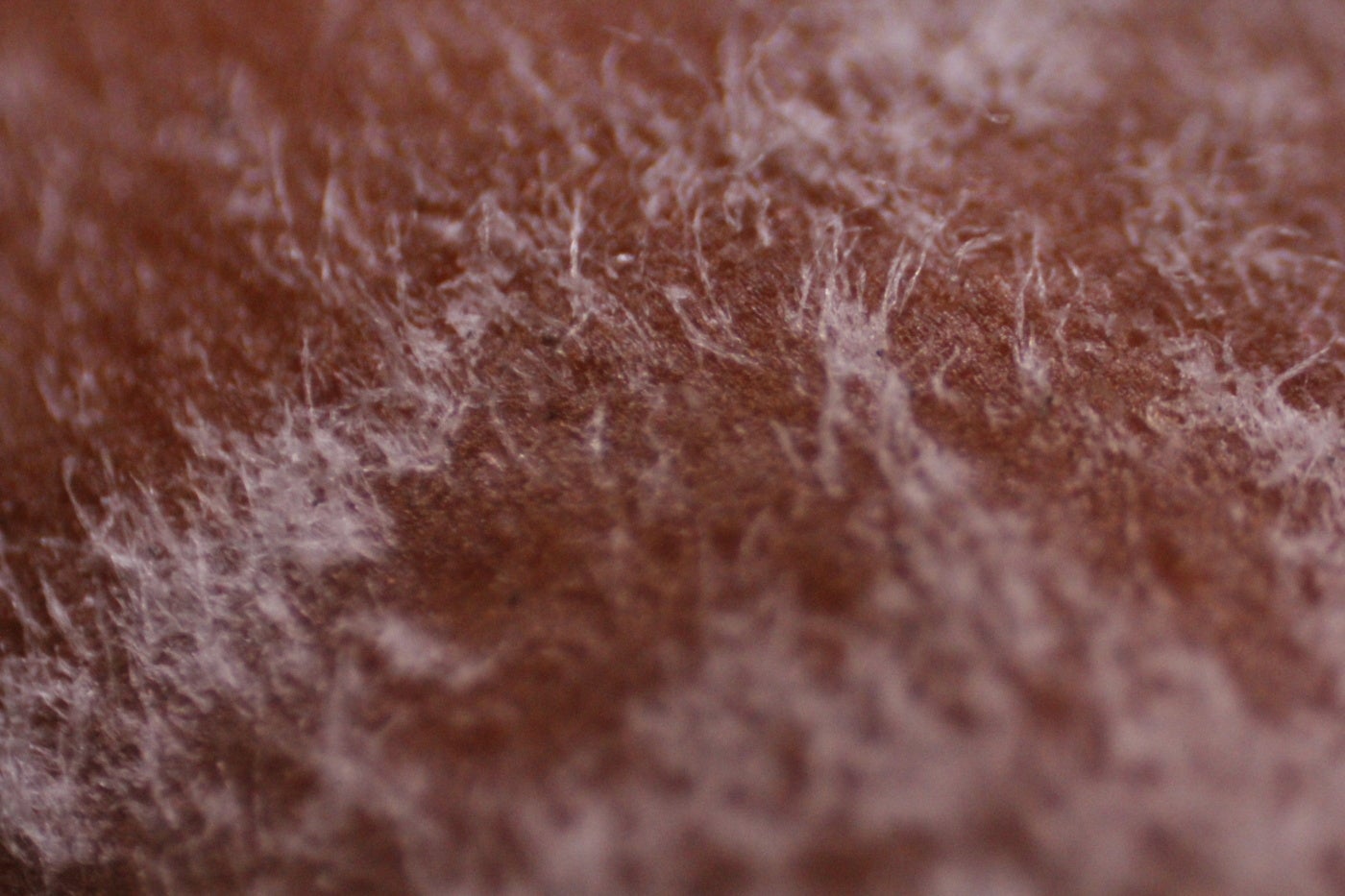
Microscopic image of acorn flesh. Photograph taken during Mariana Parisca’s Visions of Matter workshop at Institute for Contemporary Art at VCU.
For an amount of time that you feel comfortable, forget all that you already are. Assume the perspective of a seedling. Breathe in deep, hold, and face forward with a slight smile. In the words of Lauren Olamina, “God is Change.” In the words of my friend and psychic medium Evana Roman, “You are your own God.” And in the words of my reiki friend Sagnite, “You are Light.” Exhale.
Sitting before a gorgeous, mature oak tree, I meditate, visualizing a spinning acorn in the center of my solar plexus.
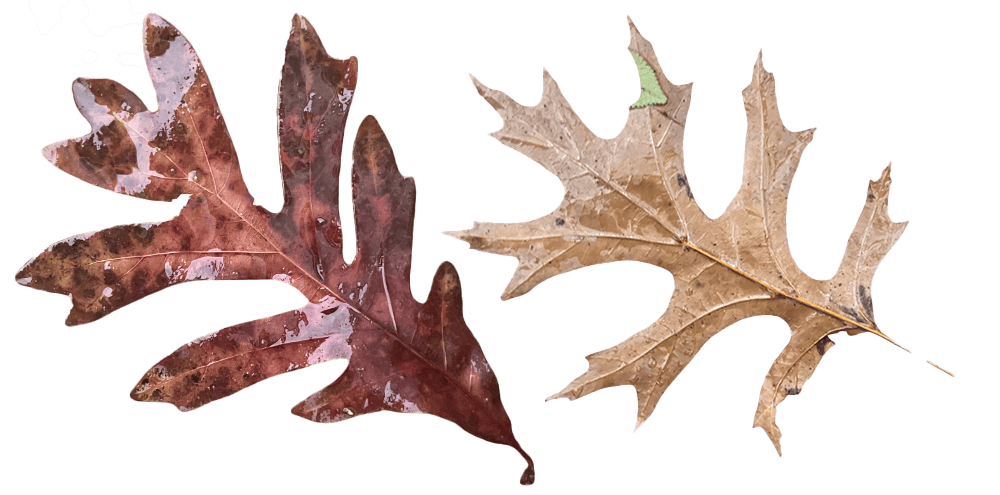
My acorn fixation started in Fall 2022 after musing on the humble acorn bread written into Parable of the Sower by Octavia E. Butler. This bread appears in the story several times as a reliable yet unremarkable staple served with most meals and not given much thought. It’s that hearty, starchy carb sustaining the characters through their hardships. Lauren Olamina learns from her father that his knowledge of acorn bread came from a book about Indigenous traditions.
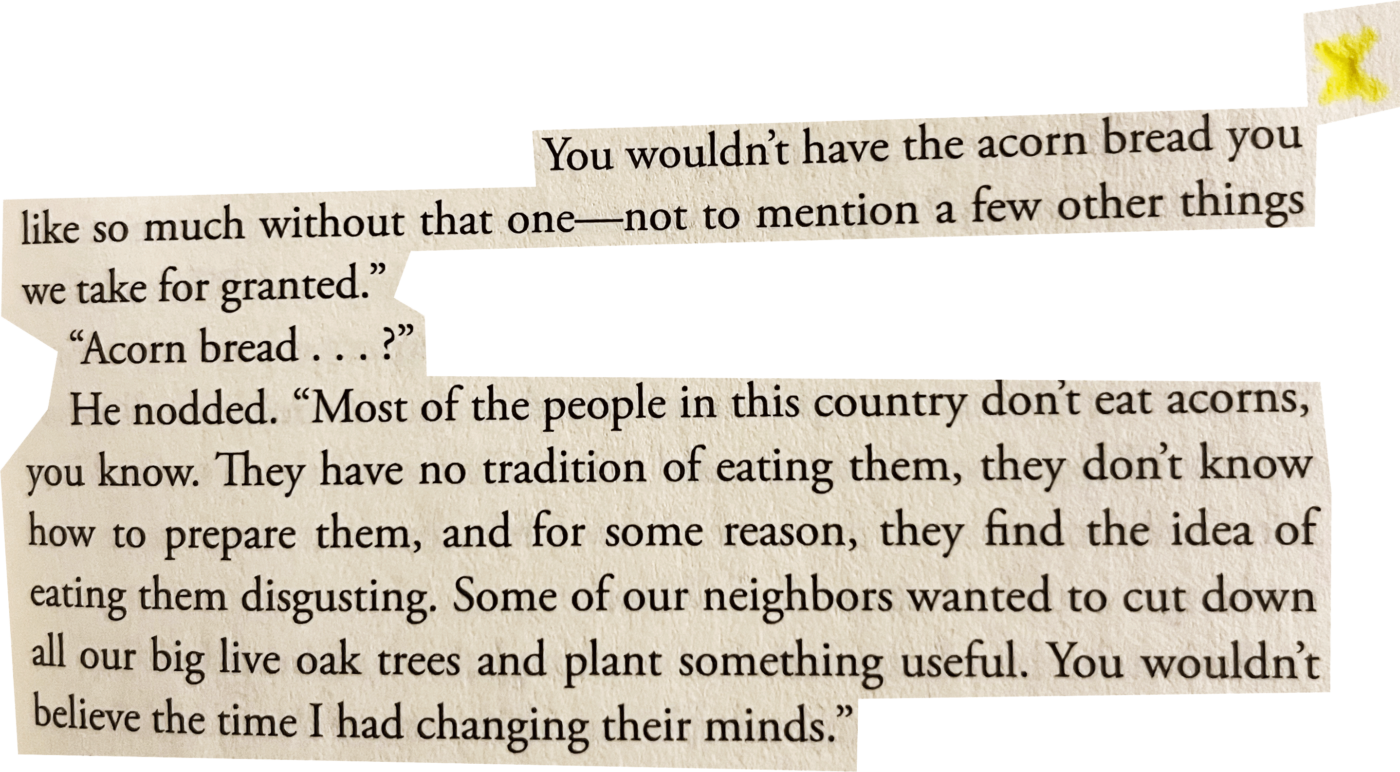
The acorn bread, although briefly mentioned, struck me deeply. Curious about the process, I started my research journey to make my own loaf. If you’ve also ever wanted to endeavor this, this is your sign to plan for the next big acorn drop! I learned that most acorns aren’t immediately edible to humans and require watchful eyes and patient hands to process them into food. After falling down a rabbit hole of acorn flour tutorials, I rang in 2023 in my squirrely era baking my first acorn bread loaf. The process to make the flour was long and involved: foraging buckets of red oak acorns, sorting through rotted or partially eaten ones, fingers pinched sore from cracking shells, weevil worms wriggling hello, chopping and grinding the acorn meat exposing more surface area, leaching out tannins over weeks, sun-drying acorn bits in my bedroom window… At first, the weevil larva freaked me out, but I learned they wouldn’t harm me (not toxic) and birds love them, so back into my yard they went. This all passed the time in a way that inspired reflection. The effort, time, and care required to process acorns made me imagine Reverend Olamina’s capacity to harvest and prepare enough acorns to produce enough flour for his entire community, passing this tradition to Lauren.
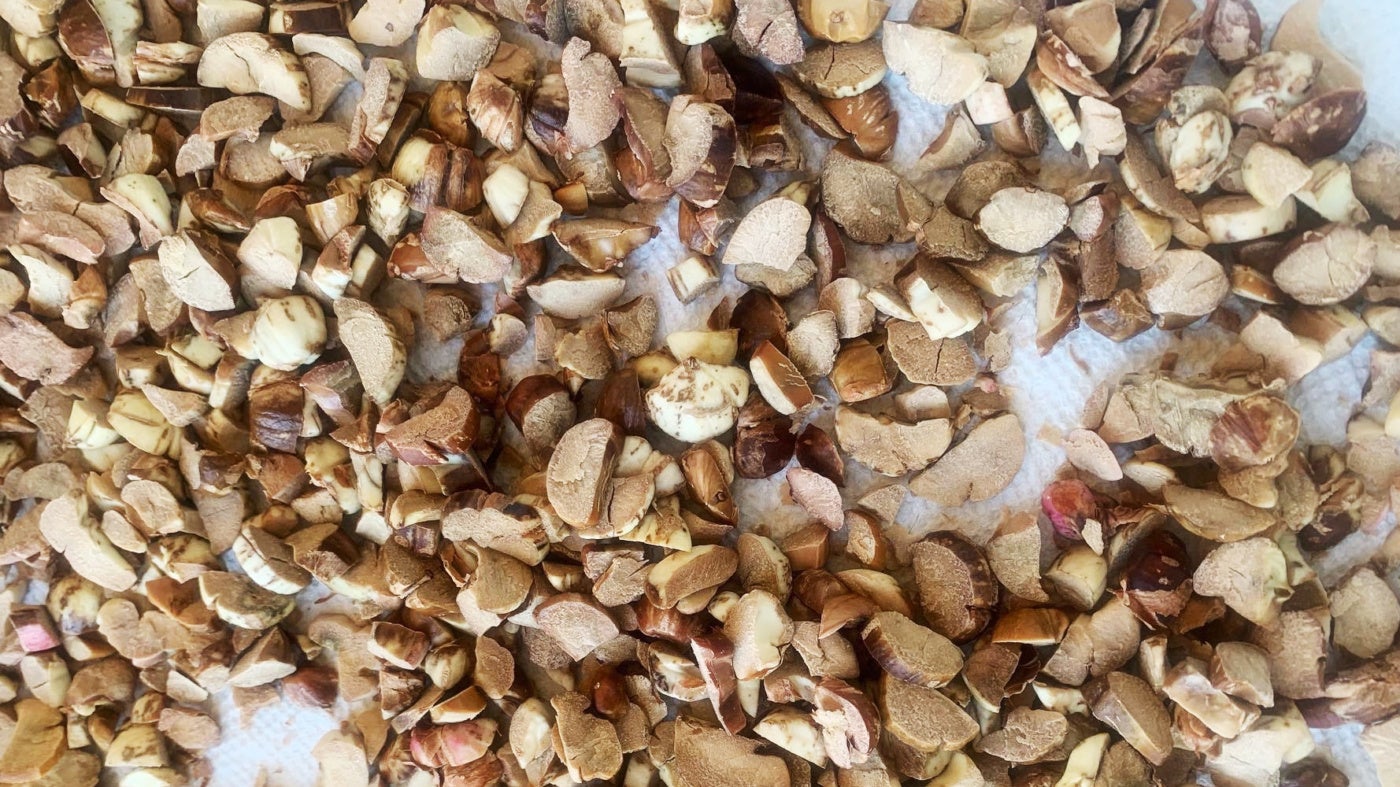
Processed acorns drying after their first bath.
There are plenty of online tutorials on how to process acorns. Here are a couple of videos that I think do a good job of thoroughly explaining the process:
How to Sustainably Forage and Cook Acorns (Acorn Flour Pancakes) by Homegrown Handgathered
Acorns Home Processing Cold Water Method by Marcie Mayer
I read the acorn bread as a symbol of abundance, with implications of the flour, the seed, the oak, and the ecosystem that precedes it. Abundance, in this sense, is both a belief and a practice–shaping decisions and acting with the faith that enough exists for everyone, with work and occasional discomfort. I think about my grandmother and mother and the rest of my family immigrating from Laos to the U.S. in the 1980s–navigating a whole new life, learning a new language, experiencing a new culture, and taking care of each other. I remember my mom making sun-dried jerky in our backyard, and the house was always filled with the aroma of fermented foods, like padek. Sun-drying and fermenting takes patience, a slow process of preservation. In our small, crowded home of seven people, my mother still always invited friends and family to eat. The first question asked when a guest arrives is “kin khao leiw baw?”–Have you eaten yet?
“Unite— Or be divided, robbed, ruled, killed by those who see you as prey. Embrace diversity or be destroyed.”
– Octavia Butler
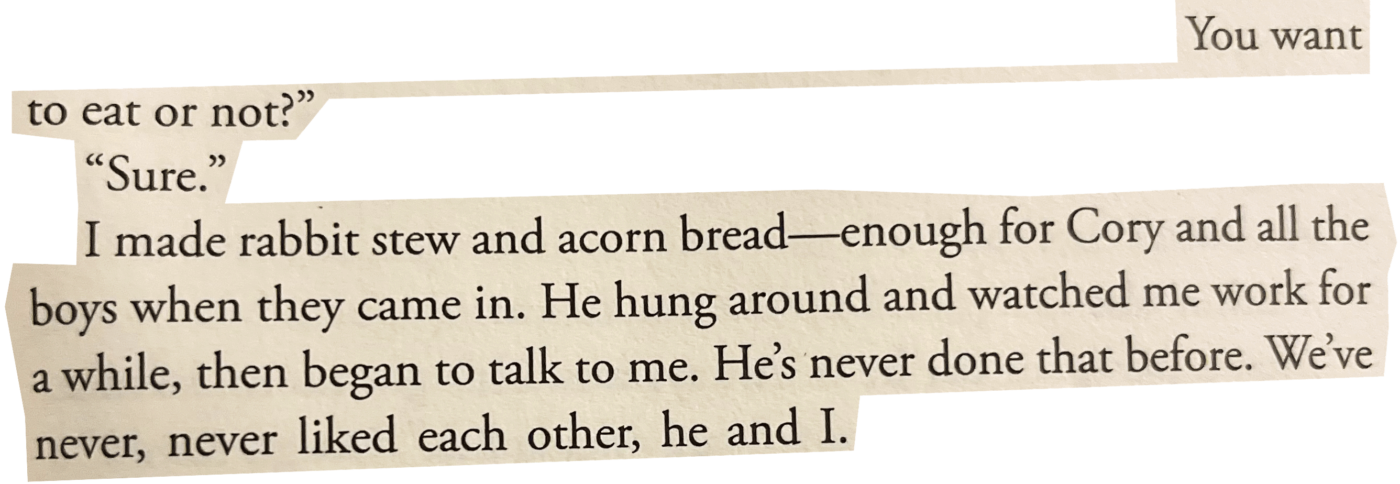
Written in 1993 and set around 2024, Parable of the Sower became a north star for people today, not just foretelling collapse but building language for collectivity. One moment that stands out is when Lauren’s brother, Keith, returns home after disappearing. Their beliefs, motivations, and logics are very different. The reunion is tense as Lauren learns about his troubled wanderings outside the community walls and the realities of their city’s violent conditions. This moment is shared during a nourishing meal prepared by Lauren, which of course, includes acorn bread. Even in their suspended discomfort and as their differences unfold in this scene, acts of care ground their situation as a last attempt at redeeming their relationship.
Parable of the Sower has brought nuance and depth to my understanding of collectivity and abundance. Abundance, in essence, could be an ecosystem that reliably sustains itself, including you and all that the ecosystem encompasses. Practicing abundance is a belief and spiritual acceptance in that ecosystem and caring back to that ecosystem. That ecosystem starts with yourself! And this leads to Butler’s amazing quote and first tenet of Earthseed: “All that you touch You Change. All that you Change Changes you. The only lasting truth is change. God is Change.” Be the seed, and take root. Together, practicing imperfect solidarity and abundance is a relational way of being, putting in good work of connecting with ourselves, the earth, and each other with care.

